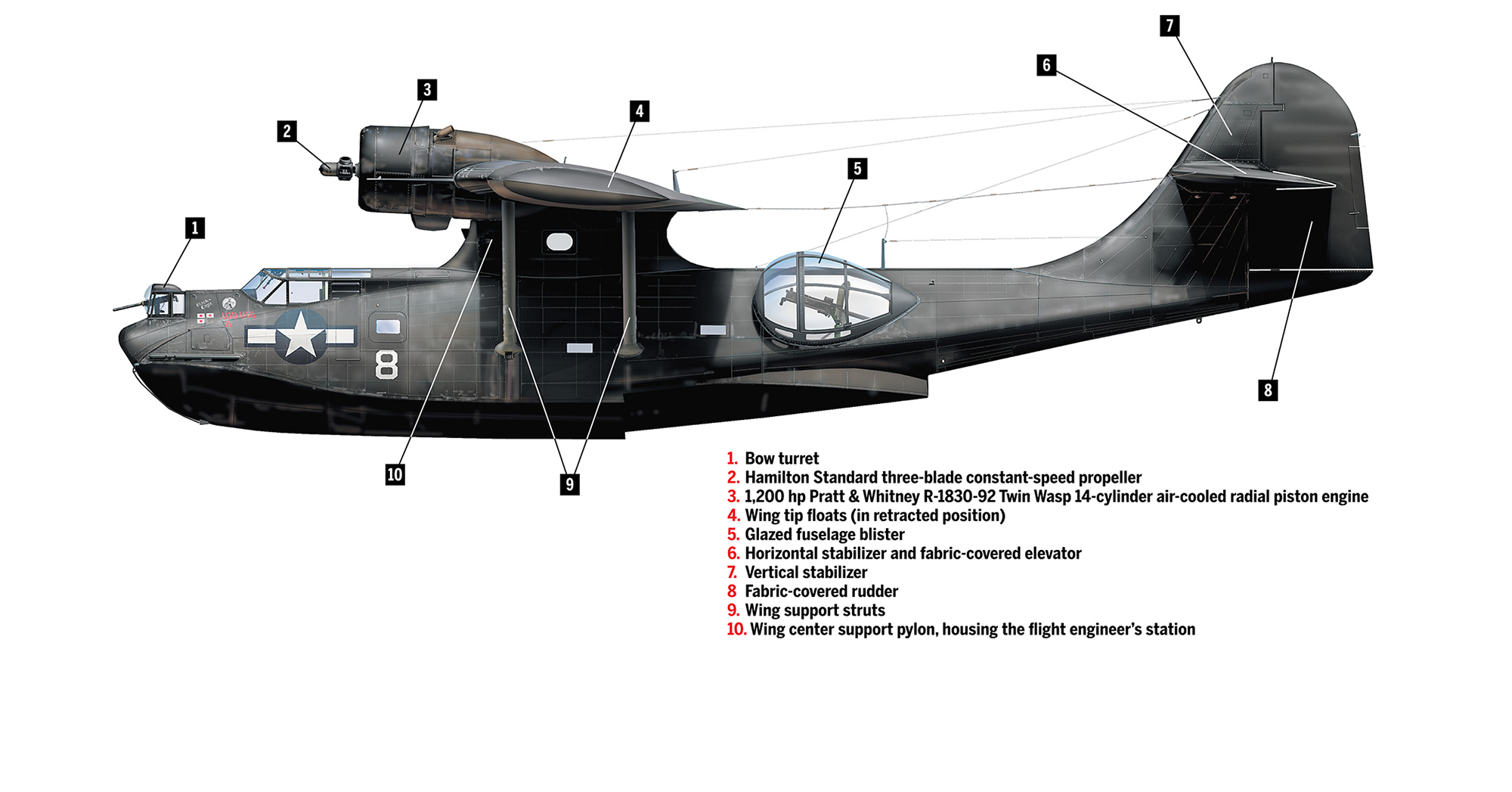Specifications (PBY-5A)
Wingspan: 104 feet
Wing area: 1,400 square feet
Length: 63 feet 11 inches
Height: 20 feet 2 inches
Weight empty: 20,910 pounds
Maximum takeoff weight: 35,420 pounds
Crew: Seven to 10
Power: Two 1,200 hp Pratt & Whitney R-1830-92 Twin Wasp 14-cylinder air-cooled radial piston engines
Maximum speed: 179 mph at 7,000 feet
Long-range cruising speed: 117 mph
Ceiling: 14,700 feet
Maximum range: 2,545 miles
Armament: Two .30-caliber machine guns in bow turret, one .50-caliber machine gun in each opposite waist blister and one .30-caliber machine gun in ventral tunnel. Plus four 1,000-pound or 500-pound bombs; or a dozen 100-pound bombs; or four 650-pound, 450-pound or 325-pound depth charges; or two Mark 13-2 torpedoes
Building on its successful P2Y sesquiplane flying boat of the early 1930s, Consolidated won a 60-aircraft contract from the U.S. Navy in 1935 for the Model 28 Catalina, which entered service a year later as the PBY-1. The Navy anticipated trouble with Japan, for which long-range reconnaissance aircraft would be essential. On its maiden voyage the PBY boasted a 3,443-mile international record nonstop flight from Norfolk, Va. to San Diego, Calif. Its superlative range and stability prompted a series of improved models and growing production, ultimately taken up under license by the Soviet Union and Canada (where it was called the Canso). Taking to the air in November 1939, the PBY-5A, an amphibious version with retractable landing gear, added more versatility.
During World War II the PBY racked up a sterling record in search and rescue, reconnaissance and combat. When the Royal Navy lost contact with the German battleship Bismarck, it was a Catalina Mk I of No. 209 Squadron, Royal Air Force Coastal Command, that found it again on May 26, 1941. British ships forced Bismarck to scuttle the next day. Amid the 1942–43 Guadalcanal campaign PBYs served as makeshift torpedo bombers, leading to regular use of matte-painted “Black Cats” for night attacks throughout the Pacific. On July 31, 1943, a Brazilian Catalina sank the German sub U-199 off Rio de Janeiro. On Aug. 2, 1945, a U.S. Navy PBY was the first vessel to rescue survivors of the torpedoed heavy cruiser Indianapolis.
Through war’s end the Allies built a total of 3,308 Catalinas—more than all other World War II–era flying boats combined. It was far and away history’s most successful military flying boat. MH





